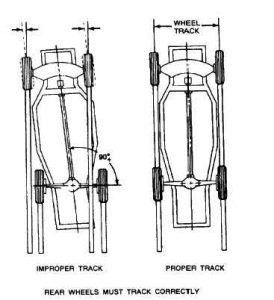Transforming a Great Company Into A Powerhouse Brand
I was invited on an exceptional journey to produce and host symposiums in the U.K., Europe, and Asia Pacific for leading global brands in order to seek the answer to a provocative question: How do we turn a great company into a powerhouse brand?
In London, Dublin, Madrid, Toronto, Hong Kong, Sydney, and Johannesburg, South Africa leaders in retail, transportation, telecommunications, energy and financial services gathered.
Our conclusion? Powerhouse brands have little to do with advertising.
#1: Alignment
 At great companies, great management teams have strong and emphatic reasons the company is the best in the market. In fact, as companies grow, adding people and perspectives, positive dissonance is inevitable. Why the company wins is an empowering topic where company-wide alignment is essential–so everyone can help create value. Most importantly, you can’t be clear externally, until you’re aligned and clear internally.
At great companies, great management teams have strong and emphatic reasons the company is the best in the market. In fact, as companies grow, adding people and perspectives, positive dissonance is inevitable. Why the company wins is an empowering topic where company-wide alignment is essential–so everyone can help create value. Most importantly, you can’t be clear externally, until you’re aligned and clear internally.
Separating table stakes—from the brand investment
Great companies share a predictably common history—essentially, the things which made them great in the first place: innovative products, customer-focus, teamwork, innovation, and operational excellence. Often, these become company values—and occasionally are executed with such unsurpassed excellence that the company becomes the category leader:
- Amazon’s operational excellence
- Disney’s teamwork and innovation
- Nordstrom’s unfailing service focus
It’s tough to find a great company which isn’t driving one—or all—of these initiatives. At great companies, they are table stakes. So what do market-leaders get that all other customer-focused, teamwork-driven, operationally excellent companies don’t? And what makes a great company, a great brand?
Defining the Destination
True or False? A “brand” is any one of the following: 1) the advertising, 2) the products and services, or 3) the company. It’s likely a management team will have as many perspectives as members. It helps to deconstruct in order to clarify the mission:
- The brand isn’t the logo or the company’s name
- The brand doesn’t equal advertising
- The brand isn’t the company’s products or services
- In fact, the brand isn’t even — the company
The brand is the collective perception people have of you. The objective of the brand is to be the market’s first choice.
Building A Powerhouse: Creating Genuine Value
 Try this experiment with the leadership team. Ask them to write down why you win. Why your company is the market’s first choice relative to the competition. Don’t do a round-table discussion. Instead, ask everyone to read their answer together, all at once.
Try this experiment with the leadership team. Ask them to write down why you win. Why your company is the market’s first choice relative to the competition. Don’t do a round-table discussion. Instead, ask everyone to read their answer together, all at once.
What you hear is what the market hears (either sharp alignment, or positive dissonance).
If a brand is the collective perception people have of you, the most important collective perception is internal. Great brands really do begin on the inside. You can’t be clear externally until you’re aligned and clear internally.
Does your team know what action(s) will ensure that you are first choice in the market? Do they know what behaviors your clients value? In other words, how to create value?
At powerhouse brands, value creation really is everyone’s job. And value has nothing to do with price.
Peter Drucker really got it right: “The customer rarely buys what the company thinks it’s selling.” Uber isn’t selling transportation. Uber is selling time.
Being Chosen First
 When great companies are face-to-face, consumers see—a sea of same. Sales are tougher, margin is compressed — internal teams begin to doubt. Impacting the collective perception—inside and out—becomes imperative.
When great companies are face-to-face, consumers see—a sea of same. Sales are tougher, margin is compressed — internal teams begin to doubt. Impacting the collective perception—inside and out—becomes imperative.
What would it take to choose us, first? Are U.S. taxi companies asking themselves this question, as they compete with Uber? Market leaders in the E.U., Asia, Australia, and South Africa turned the question into a problem solving ethos.
Most agreed, when you want to understand what it would take to choose you first, the insight of sales teams — and client interviews and surveys — provide only part of the answer. In the battle for share of market, the other half of the answer is in the possession of the competitor’s customers. Taxi companies should be asking Uber customers why they chose Uber first!
In any industry, never ask people what they want (lower prices, longer hours, and more convenient locations). You’ll go broke.
Instead, find the pain people experience — not in selecting a product or service — but in selecting a provider.
So why is it you chose Uber first?
Oh, they’re on time. You know when they’re arriving. The cars are clean. You rate the driver. Your voice counts.
Taxi companies, go fix that problem and you will gain market share.
In 2009, Amazon, began a retail journey — studying their competition’s customers and relentlessly eliminating everything that made it difficult to choose Amazon first. The intel — beginning with easier to open packaging — was driven throughout the enterprise. In 2017, Amazon continues to rank as one of the top 10 global brands. Great brands are operational. And branding begins, before advertising has uttered a single word.
 Surprisingly, whether the brand is accelerating or decelerating can generally be predicted with the answer to a single question.
Surprisingly, whether the brand is accelerating or decelerating can generally be predicted with the answer to a single question.
The most important question you’ll ever ask: Read More


